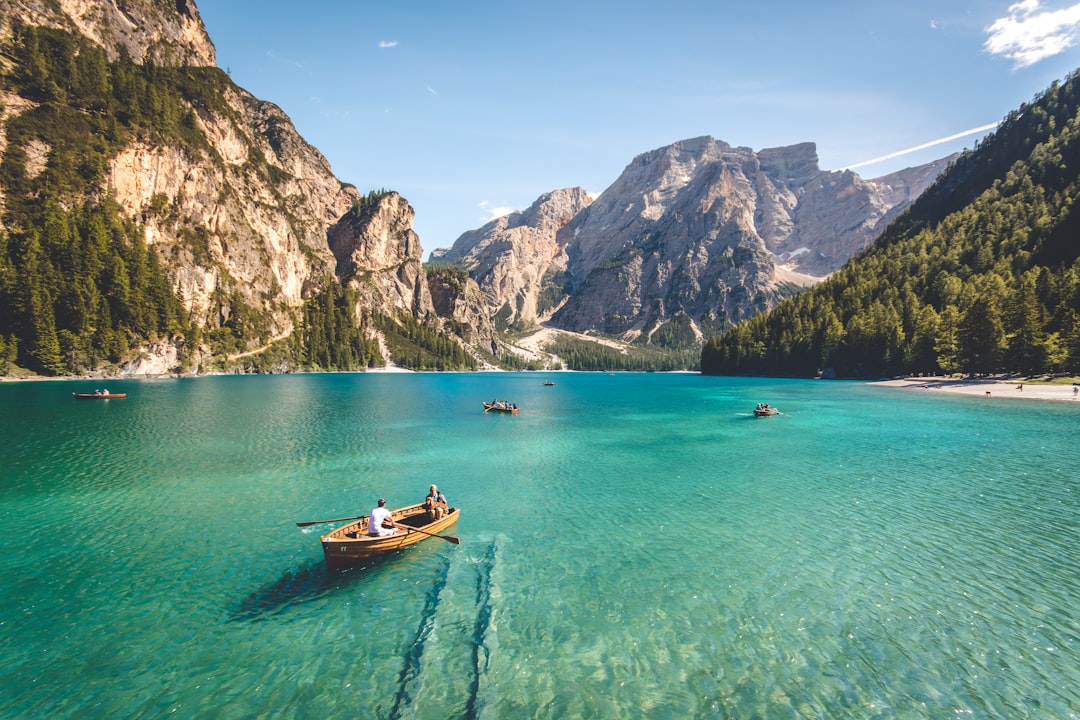The Drake Passage, a stretch of water that separates South America from Antarctica, is renowned for its breathtaking beauty and dramatic landscapes. This body of water, often characterized by its tumultuous waves and unpredictable weather, offers a unique blend of awe-inspiring vistas and raw natural power. The passage is framed by the rugged coastlines of Cape Horn to the north and the icy expanses of Antarctica to the south, creating a striking contrast that captivates travelers and adventurers alike.
The deep blue waters, often dotted with icebergs and the occasional whale, provide a stunning backdrop for those brave enough to navigate its waters. Beyond its visual splendor, the Drake Passage is a testament to the forces of nature. The convergence of the Atlantic and Pacific Oceans creates some of the most challenging sailing conditions in the world.
Yet, it is precisely this wildness that draws explorers and nature enthusiasts to its shores. The ever-changing weather patterns, from serene sunny days to fierce storms, add an element of unpredictability that enhances the allure of this maritime route. For many, crossing the Drake Passage is not just a journey; it is an experience that embodies the spirit of adventure and exploration.
Key Takeaways
- The Drake Passage offers stunning natural beauty and breathtaking scenic views.
- The history and significance of the Drake Passage make it a unique and important maritime route.
- Navigating the Drake Passage can be challenging due to its unpredictable weather and rough seas.
- Travelers should pack essentials and prepare for safe and enjoyable travel through the Drake Passage.
- The Drake Passage is home to diverse wildlife and offers opportunities for exciting excursions and activities.
Understanding the History and Significance of the Drake Passage
The historical significance of the Drake Passage cannot be overstated. Named after Sir Francis Drake, the English sea captain who navigated these waters in the late 16th century, this passage has long been a critical route for explorers, traders, and scientists. Its strategic location has made it a vital link between the Atlantic and Pacific Oceans, facilitating maritime trade and exploration for centuries.
The passage has served as a gateway to Antarctica, allowing explorers like Ernest Shackleton and Robert Falcon Scott to embark on their legendary expeditions. In addition to its historical importance, the Drake Passage holds significant ecological value. It is home to a diverse array of marine life, including various species of whales, seals, and seabirds.
The nutrient-rich waters support a vibrant ecosystem that plays a crucial role in the health of the Southern Ocean. Understanding the history and significance of the Drake Passage provides context for its current role in global maritime navigation and environmental conservation efforts. As interest in Antarctic exploration continues to grow, so too does the need to protect this unique and fragile marine environment.
What to Expect When Navigating the Drake Passage

Travelers embarking on a journey through the Drake Passage should prepare for an experience that is as exhilarating as it is unpredictable. The passage is notorious for its rough seas, with waves that can reach heights of up to 30 feet during storms. While many vessels are equipped to handle these conditions, passengers should be mentally prepared for potential discomfort.
Seasickness can be a common issue for those unaccustomed to turbulent waters, making it essential for travelers to take precautions before setting sail. Despite its challenges, navigating the Drake Passage offers unparalleled opportunities for adventure and discovery. As travelers make their way across this iconic waterway, they may encounter stunning views of icebergs, glaciers, and even marine wildlife.
The thrill of spotting a breaching whale or a soaring albatross can make even the roughest seas worthwhile. Additionally, many expedition cruises offer educational programs led by knowledgeable guides who share insights about the region’s history, ecology, and geology, enriching the overall experience for passengers.
Tips for Safe and Enjoyable Travel through the Drake Passage
| Travel Tips for the Drake Passage |
|---|
| 1. Check the weather forecast before your trip. |
| 2. Pack motion sickness medication. |
| 3. Dress in layers to stay warm. |
| 4. Follow the instructions of the crew during rough seas. |
| 5. Keep your camera ready for wildlife sightings. |
| 6. Stay hydrated and drink plenty of water. |
| 7. Enjoy the unique experience of crossing the Drake Passage. |
To ensure a safe and enjoyable journey through the Drake Passage, travelers should take several key precautions. First and foremost, it is advisable to choose a reputable expedition company with experience navigating these waters. These companies often have well-trained crews and sturdy vessels designed to withstand harsh conditions.
Additionally, travelers should stay informed about weather forecasts and be prepared for sudden changes in conditions. Packing appropriately is also crucial for a successful trip. Layered clothing is recommended to accommodate fluctuating temperatures, as conditions can vary significantly throughout the day.
Waterproof gear, including jackets and pants, will help keep travelers dry during unexpected rain or spray from waves. Furthermore, bringing seasickness medication or natural remedies can help mitigate discomfort during rough patches. By taking these precautions, travelers can enhance their overall experience while traversing this remarkable passage.
Wildlife and Scenic Views in the Drake Passage
One of the most enchanting aspects of the Drake Passage is its rich biodiversity and stunning scenery. The waters are teeming with life, providing ample opportunities for wildlife enthusiasts to observe various species in their natural habitats. From playful dolphins to majestic whales, including humpbacks and orcas, the passage is a haven for marine life.
Birdwatchers will also delight in spotting seabirds such as albatrosses and petrels soaring gracefully above the waves. In addition to its vibrant wildlife, the scenic views along the Drake Passage are nothing short of breathtaking. Icebergs drift serenely through the waters, their brilliant blue hues contrasting sharply with the deep ocean tones.
Glaciers calve into the sea with thunderous roars, creating spectacular displays of nature’s power. As travelers navigate this remarkable waterway, they are treated to an ever-changing panorama that captures the essence of Antarctica’s wild beauty.
The Best Time of Year to Explore the Drake Passage

Timing plays a crucial role in planning an expedition through the Drake Passage. The best time to explore this region typically falls between late October and early March when summer reigns in Antarctica. During these months, temperatures are milder, making conditions more favorable for travel.
Wildlife activity also peaks during this time as animals engage in breeding and feeding behaviors. However, even during peak season, travelers should remain aware that weather conditions can still be unpredictable. Storms can arise suddenly, leading to rough seas even in summer months.
Therefore, flexibility in travel plans is essential for those venturing into this remote region. By choosing to travel during this optimal window while remaining adaptable to changing conditions, adventurers can maximize their chances of experiencing all that the Drake Passage has to offer.
Choosing the Right Expedition or Cruise for Your Drake Passage Adventure
Selecting the right expedition or cruise is vital for ensuring an unforgettable experience in the Drake Passage. Numerous companies offer various itineraries ranging from short crossings to extended explorations that include landings on Antarctic shores. Travelers should consider their preferences regarding comfort levels, group sizes, and onboard amenities when making their choice.
For those seeking a more intimate experience, smaller expedition vessels may be preferable as they often allow for closer encounters with wildlife and more personalized service from crew members. Conversely, larger ships may provide additional amenities such as restaurants and entertainment options but may lack some of the intimate experiences offered by smaller vessels. Ultimately, understanding one’s priorities will help guide travelers toward selecting an expedition that aligns with their expectations.
Packing Essentials for a Journey through the Drake Passage
Packing wisely is essential for any journey through the Drake Passage. Given its unpredictable weather patterns and varying temperatures, travelers should prioritize layering clothing that can be easily added or removed as needed. A waterproof outer layer is crucial for protection against rain or sea spray while exploring on deck or during land excursions.
In addition to clothing essentials, travelers should not forget practical items such as sunscreen and sunglasses to protect against UV rays reflecting off ice and water surfaces. A good pair of binoculars can enhance wildlife viewing opportunities while onboard or during excursions on land. Finally, personal items like medications or travel documents should be organized and easily accessible throughout the journey to ensure a smooth experience.
Activities and Excursions Available in the Drake Passage
The activities available during a journey through the Drake Passage are as diverse as they are exciting. Many expedition cruises offer guided excursions that allow travelers to explore remote islands and coastal areas along Antarctica’s shores. These excursions often include opportunities for hiking on glaciers or visiting research stations where scientists study climate change and wildlife.
Onboard activities also abound during crossings of the Drake Passage itself. Passengers may participate in educational lectures led by experts in marine biology or geology who share insights about the region’s unique ecosystems and geological formations.
The Unique Challenges and Rewards of Crossing the Drake Passage
Crossing the Drake Passage presents unique challenges that test both physical endurance and mental resilience. The unpredictable weather conditions can lead to rough seas that may cause discomfort for some travelers. However, these challenges are often outweighed by the rewards that come with successfully navigating this iconic waterway.
The sense of accomplishment felt upon completing a crossing is profound; it symbolizes not only a physical journey but also an emotional one filled with adventure and discovery. Additionally, witnessing breathtaking landscapes and diverse wildlife along the way creates lasting memories that enrich travelers’ lives long after they return home. Embracing both challenges and rewards ultimately enhances one’s appreciation for nature’s beauty while fostering personal growth through exploration.
Planning Your Ultimate Adventure: Itinerary Ideas for Exploring the Drake Passage
Planning an ultimate adventure through the Drake Passage involves careful consideration of various itinerary options available to travelers today. Many expeditions begin in Ushuaia, Argentina—the southernmost city in the world—before embarking on crossings that lead directly into Antarctic waters. Itineraries may vary significantly based on interests; some may focus primarily on wildlife viewing while others emphasize scientific exploration or cultural experiences with local communities along coastal regions.
Travelers might consider combining multiple activities such as kayaking among icebergs or participating in citizen science projects aimed at monitoring environmental changes within fragile ecosystems. Ultimately, crafting an itinerary tailored to individual preferences ensures that each traveler maximizes their experience while exploring one of Earth’s last frontiers—the magnificent Drake Passage—where adventure awaits at every turn.
For those intrigued by the idea of limitless travel and the allure of the Drake Passage, an article on MyGeoQuest delves into the challenges and wonders of navigating this legendary body of water. The Drake Passage, known for its unpredictable weather and tumultuous seas, serves as a gateway to the pristine landscapes of Antarctica. This article not only explores the historical significance of the passage but also offers insights into modern-day expeditions that brave its waters. To learn more about the adventures and experiences awaiting travelers in this remote part of the world, you can read the full article on MyGeoQuest by visiting this link.
WATCH HERE: Drake Passage: Earth’s Deadliest Waters Revealed
FAQs
What is the Drake Passage?
The Drake Passage is the body of water between the southern tip of South America and the northern tip of the Antarctic Peninsula. It is known for its rough seas and challenging sailing conditions.
What is “limitless travel” in the context of the Drake Passage?
“Limitless travel” refers to the idea of exploring the Drake Passage without any restrictions or limitations, allowing for a more immersive and adventurous experience.
What are the attractions of traveling through the Drake Passage?
Traveling through the Drake Passage offers the opportunity to witness stunning landscapes, diverse wildlife, and experience the raw power of the Southern Ocean. It is also a popular route for those seeking to reach Antarctica.
What are the challenges of traveling through the Drake Passage?
The Drake Passage is known for its unpredictable weather, strong winds, and rough seas, making it a challenging and potentially uncomfortable journey for travelers.
How can travelers prepare for a journey through the Drake Passage?
Travelers can prepare for a journey through the Drake Passage by packing appropriate clothing for cold and wet conditions, taking seasickness medication, and mentally preparing for the potential challenges of the crossing. It is also important to choose a reputable and experienced tour operator for the journey.
